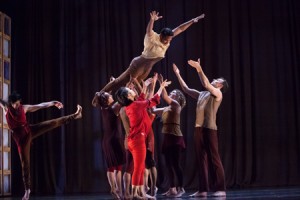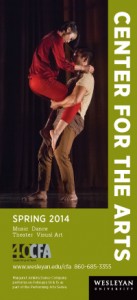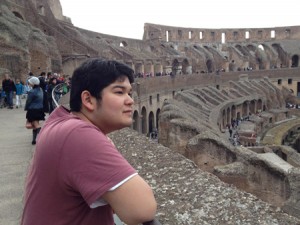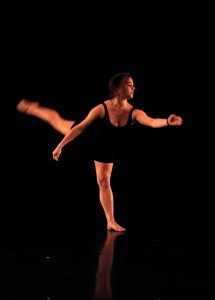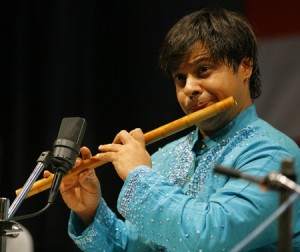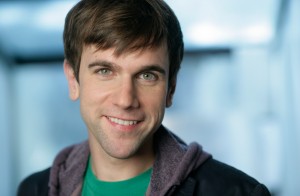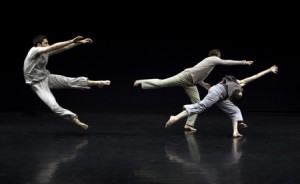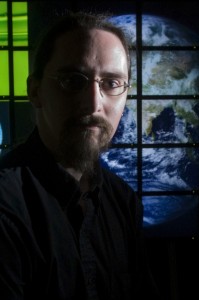CFA Arts Administration Intern Chloe Jones ’15 talks to Associate Professor of Dance Nicole Stanton about Dance Theatre of Harlem, Souleymane Badolo, and Ronald K. Brown, who will be featured as part of the 15th annual DanceMasters Weekend Showcase Performance on Saturday, March 8, 2014 at 8pm in the CFA Theater.
This Saturday marks the 15th annual DanceMasters Weekend Showcase Performance, bringing to the stage the work of four renowned choreographers: Souleymane Badolo, Ronald K. Brown, and works by Robert Garland and Helen Pickett performed by Dance Theatre of Harlem.
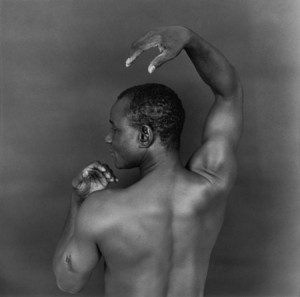
Mr. Badolo is the 2014 recipient of the Mariam McGlone Emerging Choreographer Award. Born in Burkina Faso, Mr. Badolo’s choreography is steeped in personal heritage and infused with worldly style. He began his career dancing with traditional African dance company the DAMA. In 1993, Mr. Badolo co-founded Kongo Ba Téria, a contemporary dance company based in the capital, Ouagadougou. After relocating to the United States in 2009, Mr. Badolo won the second annual Juried Bessie Award in 2012.
Wesleyan Associate Professor of Dance Nicole Stanton says of Mr. Badolo, “He has his own take on how to weave together different forms and find personal expression in them. He represents a growing contemporary dance movement taking place in continental Africa, one that is blossoming in a really interesting way.”
Mr. Badolo has performed twice before at Wesleyan — first in the New England premiere of Jawole Willa Jo Zollar and Nora Chipaumire’s visible as part of the Breaking Ground Dance Series in October 2012, and again in July 2013 as the Danspace/Institute for Curatorial Practice in Performance Creative Residency Artist on the CFA’s summer series.
[On Saturday, Mr. Badolo will be performing the New England premiere of an excerpt from Benon (2014), conceived and choreographed by Meritxell Barberá and Inma García, and set to traditional songs from Burkina Faso recorded by Victor Deme, Mahamad Billa, and Dankan Faso. Benon premiered in February 2014 at Danspace Project in New York City. Roughly translated to “harvest,” Benon is inspired by the Burkinabé tradition of dancing to celebrate the harvest.]
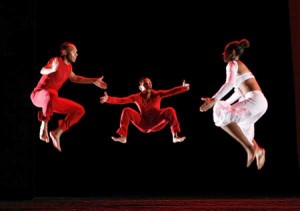
A second artist with a rich history of performing at Wesleyan, Ronald K. Brown returns to campus this weekend with his company, Evidence. Founded by Mr. Brown in 1985, the Brooklyn-based contemporary dance ensemble honors the human experience in the African diaspora through dance and storytelling. Their work fuses traditional African dance with contemporary choreography and often incorporates spoken word.
“There’s this sense of seamless flow in how he weaves together different movements,” says Ms. Stanton, who’s been following their work since the mid-1990s. “There’s something transcendent about him and his dancers.”
On Saturday, Evidence will perform Come Ye (2002), an original work by Mr. Brown set to the music of Nina Simone and Fela Kuti, which had been commissioned by the Center for the Arts in honor of the 30th anniversary of the CFA during the 2003-2004 season [the work received its New England premiere on the Breaking Ground Dance Series in February 2004.]
Mr. Brown has been a strong advocate for the growth of an African-American dance community throughout his career, a community to which the Dance Theatre of Harlem has made invaluable contributions.
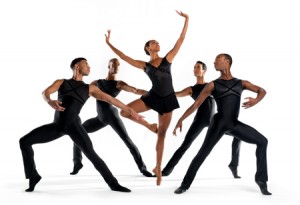
Co-founded in 1969 by acclaimed ballet instructor Karel Shook and the New York City Ballet’s first African-American principal dancer Arthur Mitchell, Dance Theatre of Harlem became the first ballet company in America comprised entirely of black dancers. The company has since toured to over 40 countries on 6 continents. Dance Theatre of Harlem encompasses a leading arts education center, founded shortly after the assassination of Dr. Martin Luther King, Jr. with a mission to make dance accessible to all children in New York City, and specifically in Harlem, where Mr. Mitchell grew up.
[Dance Theatre of Harlem will be performing the Connecticut premieres of both New Bach (1999) a witty confection of urban post-modern neoclassicism choreographed by Robert Garland and set to music by Johann Sebastian Bach; and choreographer Helen Pickett’s passionate duet When Love (2012), a journey of discovery as a man and a woman open themselves to the tenderness and wonder of the human embrace, set to music by Philip Glass. This performance at Wesleyan will be the first appearance by Dance Theatre of Harlem in Connecticut since December 2003 at Foxwoods Resort Casino.]
Currently under the artistic directorship of Virginia Johnson, a founding member of Dance Theatre of Harlem and former principal dancer, the company continues to expand its community and education outreach efforts both nationally and internationally with their program Dancing Through Barriers.
And dancing through barriers is precisely what the work of Mr. Badolo, Mr. Brown, and the Dance Theatre of Harlem does. It is their ability to gracefully meld dance forms from disparate places, traditions, and eras that unites their work.
As Ms. Stanton phrased it, “There’s a fusion of techniques from across the African diaspora.”
They dance across borders and choreograph in the space between past and present, drawing from history and tradition to propel contemporary dance forward.
“The performance makes you ask a question about tradition,” says Ms. Stanton. “What do we mean when we say something is ‘traditional’ or not? What does it mean to be ‘contemporary’?”
15th annual DanceMasters Weekend
Saturday, March 8 & Sunday, March 9, 2014
Showcase Performance
Saturday, March 8, 2014 at 8pm
CFA Theater
$28 general public; $24 senior citizens, Wesleyan faculty/staff/alumni, non-Wesleyan students; $8 Wesleyan students
Master Classes
Thirteen Master Classes will provide an opportunity for intermediate to advanced dance students and dance professionals to explore diverse dance techniques. Asterisks (*) denote the four teachers who will be teaching their first DanceMasters Weekend Master Class at Wesleyan in 2014.
On Saturday, March 8, Master Classes will be taught by the following six teachers:
Brandon “Peace” Albright (Artistic Director of Illstyle & Peace Productions, teaching a Hip Hop Master Class)
*Souleymane Badolo (the 2014 Mariam McGlone Emerging Choreographer Award recipient, teaching “Souleymane Badolo Repertory: A New Voice in African Dance”)
Ronald K. Brown (Artistic Director of Evidence Dance Company)
*Michelle Dorrance (Artistic Director of Dorrance Dance/New York, teaching a Tap Master Class)
*Virginia Johnson (Artistic Director of Dance Theatre of Harlem)
Eddie Taketa (Doug Varone & Dancers)
On Sunday, March 9, Master Classes will be taught by the following seven teachers:
*Maria Bauman (Associate Artistic Director of Urban Bush Women)
Brian Brooks (Artistic Director of Brian Brooks Moving Company)
Bill Hastings (Broadway veteran, teaching a Jazz Dance Master Class)
Carolyn Kirsch (Broadway veteran, teaching “Never Stop Moving: A Fosse-Style Jazz Workshop for Older Dancers”)
Ryoko Kudo (Limón Dance Company)
Nicholas Leichter (Artistic Director of Nicholas Leichter Dance)
Aubrey Lynch (Alvin Ailey American Dance Theater)
To see the full Master Class schedule, please click here. DanceMasters Weekend Master Classes are $19 per class for the general public (plus a $6 registration fee), and $13 per class for Wesleyan students. A Weekend Pass, which includes five Master Classes and one ticket to the Showcase Performance, is $100 for the general public (plus a $6 registration fee), and $73 for Wesleyan students. To register for Master Classes, or to purchase a Weekend Pass, please call or visit the Wesleyan University Box Office at 860-685-3355.


